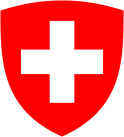Didier Burkhalter
| Didier Burkhalter | |
|---|---|
 | |
| Head of the Department of Foreign Affairs | |
|
Assumed office 1 January 2012 | |
| Preceded by | Micheline Calmy-Rey |
| President of Switzerland | |
|
In office 1 January 2014 – 31 December 2014 | |
| Vice President | Simonetta Sommaruga |
| Preceded by | Ueli Maurer |
| Succeeded by | Simonetta Sommaruga |
| Vice President of Switzerland | |
|
In office 1 January 2013 – 31 December 2013 | |
| President | Ueli Maurer |
| Preceded by | Ueli Maurer |
| Succeeded by | Simonetta Sommaruga |
| Head of the Department of Home Affairs | |
|
In office 1 November 2009 – 31 December 2011 | |
| Preceded by | Pascal Couchepin |
| Succeeded by | Alain Berset |
| Member of the Swiss Federal Council | |
|
Assumed office 1 November 2009 | |
| Preceded by | Pascal Couchepin |
| Chairperson of the Organization for Security and Co-operation in Europe | |
|
In office 1 January 2014 – 31 December 2014 | |
| Preceded by | Leonid Kozhara |
| Succeeded by | Ivica Dačić |
| Personal details | |
| Born |
17 April 1960 Neuchâtel, Switzerland |
| Political party | FDP.The Liberals |
| Spouse(s) | Friedrun Sabine Burkhalter |
| Children | 3 |
| Alma mater | University of Neuchâtel |
Didier Burkhalter (born 17 April 1960 in Neuchâtel) is a Swiss politician.
Burkhalter is a member of FDP.The Liberals political party. He was elected as member of the Swiss Federal Council on 16 September 2009, and succeeded Pascal Couchepin on 1 November 2009, when he became head of the Federal Department of Home Affairs (the Swiss interior minister). Since 1 January 2012, he is head of the Department of Foreign Affairs.[1] In 2014 he was President of the Swiss Confederation.
Biography
A native of the Canton of Neuchâtel, Burkhalter was member of the Parliament of the Canton of Neuchâtel from 1990 to 2001. From 1991 to 2005, he was a member of Neuchâtel's city government (Conseil communal), and was the mayor of the city several times (1994/1995, 1998/1998, 2001/2002). From 2003 to 2007, he was a member of the Swiss National Council.
On 11 November 2007, he was elected to the Council of States, along with Social Democratic Party (SP) candidate, Gisèle Ory, who was re-elected for a second term. During the election campaign, he was backed by the Liberal Party (PLS) and the SVP/UDC.
On 4 December 2013, he was elected as President of the Swiss Confederation for the 2014 term by taking 183 of the available 222 votes of the Federal Assembly.[2][3]
On January 1, 2014, he assumed the office as President of the Swiss Confederation. As President of the Confederation, he presides over meetings of the Federal Council and carries out representative functions that would normally be handled by a head of state in other democracies (though in Switzerland, the Federal Council as a whole is regarded as the head of state). He is also the highest-ranking official in the Swiss order of precedence, and has the power to act on behalf of the whole Council in emergency situations. However, in most cases, the President is merely primus inter pares, with no powers over and above his six colleagues.
Burkhalter has a degree in Economics, is married to a native Austrian, and is the father of three children.[4]
References
- ↑ "Burkhalter wird Aussen-, Berset Innenminister". Tages-Anzeiger (in German). 2011-12-16. Retrieved 2011-12-16.
- ↑ Burkhalter: «Ich werde andere Krawatten tragen als Maurer», article on the website of Swiss Radio & Television srf.ch from December 4, 2013 (in German). Retrieved 20-01-2014
- ↑ Ungewohntes Rampenlicht für den Aussenminister, article in the Tagesanzeiger from December 25, 2013 (in German). Retrieved 20-01-2014
- ↑ Didier Burkhalter - Head of the Federal Department of Foreign Affairs, at Federal Administration admin.ch (in English). Retrieved 20-01-2014
External links
- Profile of Didier Burkhalter with election results on the website of the Swiss Federal Council.
- Presidential year 2014 (English)
- Swiss OSCE Chairmanship 2014 (English)
- Curriculum Vitae of Federal Councillor Didier Burkhalter (English)
- FDFA Homepage (English)
 Media related to Didier Burkhalter at Wikimedia Commons
Media related to Didier Burkhalter at Wikimedia Commons
| Political offices | ||
|---|---|---|
| Preceded by Pascal Couchepin |
Member of the Swiss Federal Council 2009–present |
Incumbent |
| Head of the Department of Home Affairs 2009–2011 |
Succeeded by Alain Berset | |
| Preceded by Micheline Calmy-Rey |
Head of the Department of Foreign Affairs 2012–present |
Incumbent |
| Preceded by Ueli Maurer |
Vice President of Switzerland 2013 |
Succeeded by Simonetta Sommaruga |
| President of Switzerland 2014 | ||

